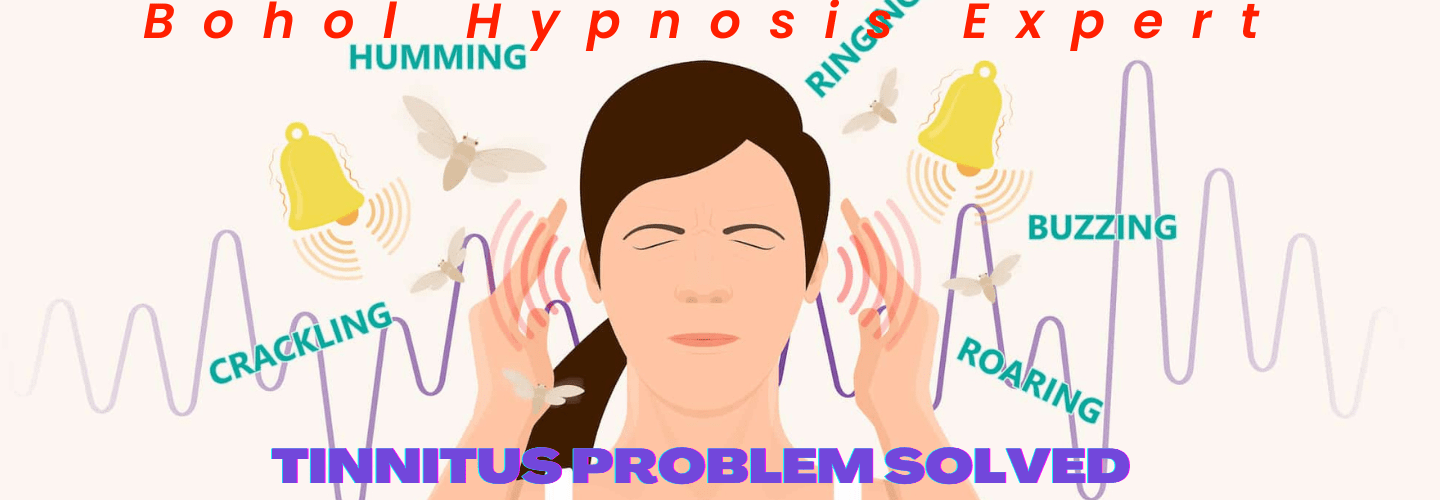
Begin on a transformative journey to unleash your full potential with self-hypnosis. Grasp the basics to access your subconscious mind and make positive changes. Set up your environment for optimal focus and incorporate soothing elements. Master diaphragmatic breathing to enhance relaxation and focus. Attain deep relaxation to connect the conscious and subconscious minds. Utilize visualization to empower goal achievement. Create an action plan with specific goals and regular monitoring. Customize hypnosis suggestions to reprogram your subconscious. Establish a consistent self-hypnosis routine for lasting change. Assess progress and adjust techniques for continuous growth and success. Take the first step towards a powerful transformation.
Key Takeaways
- Develop a personalized hypnosis script for specific goals.
- Practice deep relaxation techniques to access the subconscious mind.
- Create an action plan with measurable objectives for self-improvement.
- Establish a consistent self-hypnosis routine for lasting results.
- Monitor progress regularly to track achievements and adjust techniques.
Understanding Self-Hypnosis Basics
Starting the exploration of self-hypnosis reveals a pathway to access the depths of your subconscious mind through purposeful relaxation techniques. Self-hypnosis is a powerful tool that empowers individuals to delve into their innermost thoughts and beliefs, enabling them to make positive changes in their lives. By actively participating in this process and repeating affirmations or suggestions, individuals can access their subconscious minds to achieve desired outcomes.
One of the fundamental aspects of self-hypnosis is the understanding that our subconscious mind plays an essential role in shaping our behaviors, thoughts, and emotions. Through self-hypnosis, individuals can bypass the critical faculty of the conscious mind and directly communicate with the subconscious, allowing for deep-seated changes to take place. This process requires patience, practice, and a willingness to let go of limiting beliefs that may be holding you back.
The benefits of self-hypnosis are vast and impactful. From reducing stress and anxiety to improving focus and concentration, self-hypnosis can help individuals break free from negative patterns and habits. Valerie Austin's book serves as a practical guide for mastering self-hypnosis techniques, providing valuable insights into harnessing the inner power that lies within each of us.
In essence, self-hypnosis is a transformative practice that can pave the way for personal growth, enhanced well-being, and the achievement of one's goals. By understanding the basics of self-hypnosis, individuals can explore their full potential and create positive changes in various aspects of their lives.
Preparing Your Environment for Hypnosis
To optimize the effectiveness of your self-hypnosis practice, creating a serene and comforting environment is paramount. Your surroundings play a significant role in influencing your behaviour patterns during the hypnotic state. Here are three essential elements to take into account when preparing your environment for hypnosis:
- Eliminate Distractions: Clear away any potential distractions such as noise, bright lights, or clutter that could interrupt your focus. By creating a quiet and peaceful space, you can enhance your ability to concentrate on the hypnotic suggestions.
- Designate a Specific Area: Set up a dedicated space for your self-hypnosis practice. Having a designated area sends a signal to your mind that it is time for relaxation and focus, making it easier to enter a hypnotic state.
- Incorporate Calming Elements: Utilize calming elements like soft lighting, comfortable seating, and soothing music to promote relaxation and deepen the hypnotic experience. These elements can help create a tranquil atmosphere that supports receptivity to hypnotic suggestions.
Mastering Diaphragmatic Breathing Techniques

Mastering the art of diaphragmatic breathing empowers individuals to cultivate relaxation, enhance focus, and improve overall well-being through a fundamental technique essential in the practice of hypnosis. Diaphragmatic breathing involves filling the lungs fully with air, promoting relaxation and ideal oxygenation. It is a pivotal component of hypnosis and can be learned to help in relaxing under pressure. By mastering diaphragmatic breathing techniques, individuals can achieve a relaxed state of mind on demand. This technique is vital for enhancing focus, reducing stress, and improving overall well-being.
Regular practice of diaphragmatic breathing is essential to experience its positive effects on physical and mental health. Taking deep breaths using the diaphragm instead of shallow chest breathing allows for better oxygen exchange, leading to a calmer nervous system and reduced stress levels. By focusing on the breath entering and leaving the body, individuals can anchor themselves in the present moment, fostering mindfulness and inner peace. Incorporating diaphragmatic breathing into daily routines can enhance one's ability to manage challenging situations with clarity and composure. Embrace the power of diaphragmatic breathing to open a pathway to improved well-being and a deeper connection to oneself.
Achieving Deep Relaxation for Hypnosis
Embrace the profound impact of deep relaxation techniques in the domain of hypnosis, paving the way for heightened states of mental clarity and profound tranquility. When delving into the world of achieving deep relaxation for hypnosis, it is essential to recognize the innate power of the mind and body to heal and rejuvenate itself through natural processes.
Here are three key aspects to take into account in harnessing this natural self-healing gift:
- Diaphragmatic Breathing: This foundational technique forms the cornerstone of deep relaxation in hypnosis, allowing for the synchronization of mind and body through the regulation of breath.
- Mind-Body Connection: Relaxation techniques serve as bridges that connect the conscious and subconscious realms, facilitating a harmonious flow of energy and promoting holistic well-being.
- Relaxation Response Development: Cultivating the relaxation response is not merely a skill but a transformative practice that can be refined over time, leading to a profound sense of inner peace and serenity.
Harnessing the Power of Visualization

Realizing the potential of visualization empowers individuals to unleash their goals and aspirations with focused mental imagery. Visualization is a self-healing gift known for its ability to harness the power of the mind to create detailed mental images that pave the way for achieving specific objectives. When engaging in visualization, individuals activate the same brain regions as they would during actual experiences, thereby enhancing motivation and performance. This technique is not only limited to athletes; top performers in various fields utilize visualization to improve skills, maintain focus, and enhance overall performance.
By mentally rehearsing successful outcomes, individuals can effectively turn their dreams into reality. The practice of visualization on a regular basis can strengthen neural pathways, making it easier to achieve goals and aspirations. Through the vivid creation of detailed mental images, individuals can align their subconscious mind with their conscious desires, creating a powerful synergy that propels them towards success.
Incorporating visualization into daily routines can lead to profound transformations in mindset and behavior. It serves as a potent tool for envisioning success, overcoming challenges, and fostering a positive outlook on life. Embracing the art of visualization taps into the immense potential within each individual, guiding them towards the realization of their deepest desires and aspirations.
Setting Clear and Attainable Goals
Setting clear and attainable goals sets the foundation for success in self-hypnosis.
By defining SMART goals, individuals can create a powerful roadmap towards achieving their desired outcomes.
This process not only sharpens focus but also fuels motivation and a sense of achievement upon reaching milestones.
Specific Goal Setting
To achieve success in self-hypnosis, individuals must meticulously define clear and attainable objectives through specific goal setting. Setting specific goals in real estate management enhances focus and motivation, leading to better results.
Clear goals provide a roadmap for progress and help track achievements effectively. Well-defined goals create a sense of direction and purpose in pursuing desired outcomes. Specific goal setting enables individuals to break down larger objectives into manageable steps for success.
Action Plan Development
In the pursuit of self-improvement through self-hypnosis, crafting a strategic roadmap through Action Plan Development is essential for achieving clear and attainable goals. By setting specific and measurable objectives that resonate with your aspirations for self-improvement, you lay a solid foundation for tapping into your full potential.
Breaking down these goals into manageable steps not only guarantees steady progress but also keeps you motivated along the way. Regularly reviewing and adjusting your action plan is vital to staying on course and adapting to any changes that may arise.
Tracking your achievements against these defined goals allows you to effectively gauge your progress and make any necessary modifications to propel yourself towards realizing your full potential.
Monitoring Progress Regularly
Regularly monitoring your progress in self-hypnosis by establishing clear and attainable goals is key to staying focused and motivated on your journey towards self-improvement. Setting specific goals and tracking them consistently can help you break unwanted behavior patterns and achieve lasting change.
Here are three essential benefits of monitoring progress regularly:
- Enhanced Focus: Clear goals provide a roadmap for your self-hypnosis practice, keeping you on track towards your desired outcomes.
- Increased Motivation: Tracking your goals allows you to celebrate small wins along the way, boosting your motivation to continue your self-improvement journey.
- Improved Adaptability: Monitoring progress helps you identify areas where you may need to adjust your self-hypnosis techniques for better results, fostering growth and development.
Scripting Personalized Hypnosis Suggestions
Crafting personalized hypnosis suggestions is a tailored and powerful method to address individual goals and challenges effectively. By creating specific and tailored statements that resonate with an individual's desires, beliefs, and areas for improvement, personalized hypnosis suggestions can effectively target the subconscious mind for positive change. These suggestions are essential for maximizing the effectiveness of self-hypnosis sessions and achieving desired outcomes.
When scripting personalized hypnosis suggestions, it is vital to guarantee that the statements are aligned with the individual's goals and aspirations. Tailoring the suggestions in this way increases the likelihood of success as they resonate deeply with the subconscious mind. This personalized approach allows individuals to address specific areas for improvement, whether it be overcoming fears, boosting self-confidence, or enhancing performance in a particular area.
Moreover, personalized hypnosis suggestions serve as a powerful tool for reprogramming the subconscious mind and instilling positive beliefs and behaviors. Through targeted and personalized suggestions, individuals can harness the full potential of self-hypnosis and instigate profound changes in their lives. Embracing the practice of scripting personalized hypnosis suggestions empowers individuals to take control of their subconscious programming and pave the way for lasting transformation.
Implementing Self-Hypnosis Practice Routine

Starting a self-hypnosis practice routine can pave the way for transformative personal growth. By committing 10-15 minutes 4-5 days a week to this practice, you can anchor your intentions and goals effectively.
Utilize relaxation techniques and visualization to enhance the power of your self-hypnosis sessions and propel yourself towards your long-term aspirations.
Daily Practice Schedule
Begin on a transformative journey towards self-discovery and growth by creating and adhering to a daily practice schedule for implementing self-hypnosis into your routine. Consistency is key in reaping the full benefits of self-hypnosis practice.
To establish a successful routine, consider the following:
- Allocate Time Slots: Dedicate specific time slots each day for self-hypnosis practice to guarantee regularity and effectiveness.
- Frequency: Set aside 10-15 minutes 4-5 days a week for self-hypnosis practice to experience significant improvements.
- Long-Term Benefits: Consistent practice of self-hypnosis routines can enhance focus, relaxation, and goal achievement over time.
Effective Anchoring Techniques
To enhance the efficacy of self-hypnosis practice routines, mastering effective anchoring techniques is paramount for swiftly accessing and maintaining desired mental states.
Anchoring techniques involve linking a specific touch, word, or gesture to a particular state of mind or emotion, enabling quick access to that state upon activating the anchor. Through consistent repetition and reinforcement during self-hypnosis sessions, these anchors become powerful triggers for desired mental states.
Evaluating Progress and Adjusting Techniques
Evaluating your progress in self-hypnosis involves diligently tracking shifts in behavior, mindset, and habits to tailor your techniques for continued growth and improvement. As you commence on this journey of self-awareness and personal development, here are key steps to optimize your self-hypnosis practice:
- Self-Reflection: Take time to introspect and assess how your current self-hypnosis techniques are impacting your mindset and behaviors. Self-reflection can provide valuable insights into areas that may require adjustment or further focus.
- Feedback Loop: Engage with a professional or mentor who can offer constructive feedback on your self-hypnosis journey. External perspectives can offer fresh insights and help refine your approach for better results.
- Adaptability: Embrace adaptability as a core principle in your self-hypnosis practice. Be willing to adjust your techniques based on evolving goals and priorities. Flexibility allows you to tailor your self-hypnosis methods to suit your changing needs effectively.
Frequently Asked Questions
How to Do Self Hypnosis Step by Step?
To practice self-hypnosis step by step, begin by finding a calm environment and relaxing your body with deep breaths. Utilize visualization techniques to create a tranquil mental image that aids in achieving a hypnotic state.
Set clear goals for your session, such as stress reduction or confidence enhancement. Regular practice of self-hypnosis can lead to positive changes in your life.
What Are the Stages of Self Hypnosis?
In the domain of self-hypnosis, the journey unfolds through distinct stages. At its core lies the essential step of deep relaxation, serving as the gateway to the subconscious mind.
From this tranquil state, one progresses through induction, deepening, visualization, and suggestion. Each stage plays a pivotal role in accessing the potential for positive transformation and achieving personal goals.
Embrace the process with an open mind and a willingness to explore the power within.
What Are the Steps in Inducing Hypnosis?
To induce hypnosis, one can utilize visualization techniques such as focusing on a calm mental image, deep breathing, and progressive muscle relaxation.
By creating a serene mental space and releasing tension through breathing and muscle relaxation, individuals can enter a state conducive to hypnosis.
Visualization aids in setting the stage for self-hypnosis by promoting relaxation and focus, making it easier to tap into the subconscious mind for personal growth and goal achievement.
What Is the Most Important Element in Self Hypnosis?
In the domain of self-hypnosis, the most pivotal element lies in the power of suggestion. This fundamental aspect harnesses the ability to influence one's subconscious mind, paving the way for transformative changes and personal growth.
By skillfully utilizing the power of suggestion, individuals can tap into their inner potential, rewire limiting beliefs, and cultivate a mindset geared towards success and fulfillment.
This cornerstone of self-hypnosis serves as a catalyst for profound psychological empowerment.
Conclusion
To sum up, self-hypnosis holds the key to unleashing your full potential and achieving your goals. By mastering the basics, creating a conducive environment, and practicing regularly, you can harness the power of your mind to bring about positive change in your life.
Remember, 'The only limit to our realization of tomorrow will be our doubts of today.' Embrace self-hypnosis as a tool for personal growth and watch as you maximize your potential.





